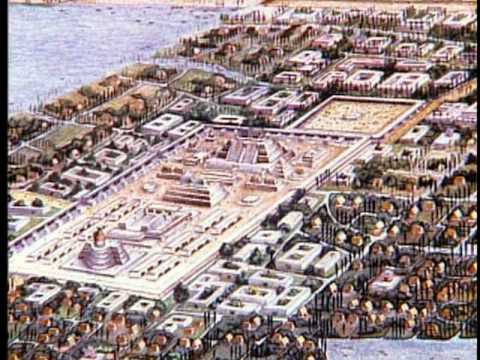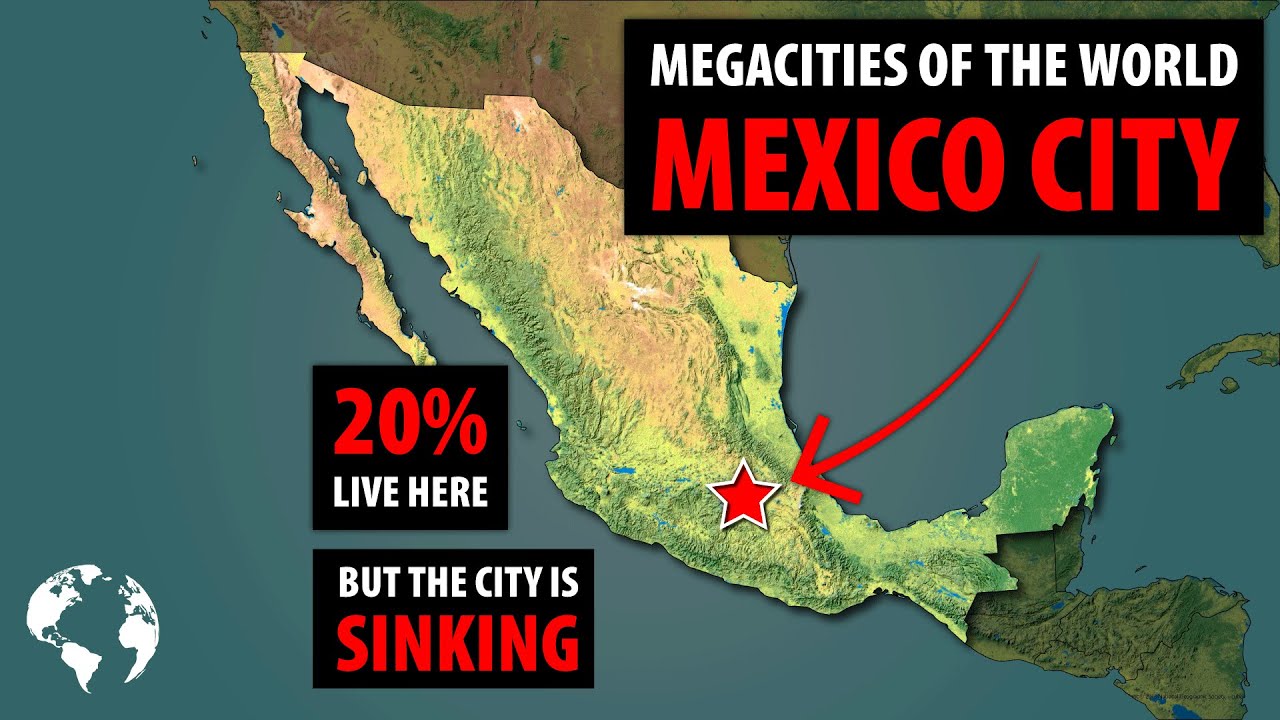Understanding the Uniqueness of Tenochtitlán
The city of Tenochtitlán, the ancient capital of the Mexica Empire, now lying beneath modern-day Mexico City, continues to captivate historians, architects, and travelers alike due to its unparalleled uniqueness. This metropolis, founded in 1325 on an island in Lake Texcoco, was the heart of a sophisticated civilization long before Europeans set foot on the American continent. Its strategic location not only made it a thriving trade center but also a formidable stronghold that awed the Spanish conquistadors upon their arrival.
One of the most fascinating aspects of Tenochtitlán was its intricate system of canals and bridges, which facilitated transportation and communication within the city. This network of waterways, often compared to the canals of Venice, allowed for efficient movement of people and goods. The city’s layout, with its precise grid system, reflected a deep understanding of urban planning and engineering, illustrating the Mexica’s advanced knowledge in these fields.
Furthermore, the grandeur of Tenochtitlán’s temples and pyramids stands as a testament to the Mexica’s architectural prowess and religious devotion. The Templo Mayor, a colossal dual pyramid dedicated to the gods Tlaloc and Huitzilopochtli, was the spiritual center of the city. This and other majestic structures showcased not only the Mexica’s engineering capabilities but also their complex religious beliefs and societal structures.
Another unique feature of Tenochtitlán was the chinampas, or “floating gardens”, an innovative agricultural technique developed by the Mexica. These man-made islands were crafted from aquatic weeds, mud, and earth to create fertile land for farming. This ingenious system allowed for year-round agriculture and supported a burgeoning population by providing a steady supply of food to the city’s inhabitants.
The fall of Tenochtitlán to the Spanish in 1521 marked the end of an era, but the remnants of this great city continue to reveal the ingenuity and spirit of its people. Excavations and archaeological discoveries steadily unveil the mysteries of Tenochtitlán, allowing us to appreciate the complexity and beauty of a civilization that thrived in a landscape both challenging and bountiful. The remnants of Tenochtitlán beneath Mexico City not only tell a story of technological and architectural innovation but also serve as a poignant reminder of the rich cultural heritage that shaped the Mexican identity.
The Myth of Homogeneous Architecture in Tenochtitlán
In exploring the rich tapestry of Mexico’s historical landscape, the ancient city of Tenochtitlán stands out as a testament to the architectural ingenuity of the Aztec civilization. Yet, there exists a wide misconception about the city’s architectural design, often portrayed as uniform and monolithic. This interpretation overlooks the diverse architectural styles that flourished in Tenochtitlán, reflecting the complex socio-political and environmental landscapes of the time.
The core of Tenochtitlán’s architectural marvel lies in its strategic urban planning and sophisticated engineering, which was far from homogeneous. The city’s design incorporated a unique blend of practicality and symbolism, with buildings and structures serving specific communal, administrative, and religious purposes. From the towering Templo Mayor, dedicated to the gods of war and rain, to the intricately designed residential areas that accommodated the elite and commoner alike, Tenochtitlán was a city of varied architectural expressions.
Furthermore, the use of materials in construction varied significantly across the city, debunking the myth of uniformity. Structures at the heart of Tenochtitlán were built with finely cut stone and adorned with elaborate carvings and sculptures, reflecting the city’s wealth and the high status of its occupants. In contrast, the peripheral areas of the city saw more humble constructions, often made from adobe and less ornate, catering to the needs of the common populace.
The juxtaposition of the grandiose with the modest within Tenochtitlán also highlights the adaptability of Aztec architecture to the city’s challenging environment. The builders of Tenochtitlán were adept at harnessing the natural landscape, constructing floating gardens (chinampas) and an intricate system of canals that not only facilitated transportation but also supported agriculture in the swampy conditions of Lake Texcoco.
The myth of homogeneous architecture in Tenochtitlán glosses over the nuances that made the city a marvel of its time. Acknowledging the diversity and complexity of Tenochtitlán’s architectural landscape is crucial to appreciating the rich cultural heritage of Mexico and understanding the ingenuity of the Aztec civilization.
Water Supply System in Tenochtitlán
The ancient city of Tenochtitlán, the capital of the Aztec Empire, was renowned for its sophisticated water supply system that marvelously catered to the needs of its inhabitants. Located on an island in the middle of Lake Texcoco, the city’s engineers faced the challenge of providing fresh water to its population and devised ingenious solutions to meet this need.
First and foremost, Tenochtitlán was connected to the mainland through a system of causeways. These causeways were equipped with bridges that allowed canoes to pass and also contained pipes constructed from terracotta. These pipes were part of an aqueduct system that brought fresh water from the springs in Chapultepec to the city, demonstrating the Aztec’s advanced understanding of hydraulic engineering.
Aqueducts and Canals: The aqueduct system was not the only marvel of Tenochtitlán’s engineering; the city also had a complex network of canals that served both as streets and as a means of transporting goods throughout the city. These canals were vital for the distribution of fresh water to various districts, and they also played a key role in the city’s defense. The combination of aqueducts and canals showcases the Aztec’s innovative approach to urban planning and infrastructure.
Water storage was another critical aspect of Tenochtitlán’s water supply system. The city featured large reservoirs that were used to store fresh water brought in by the aqueducts. These reservoirs ensured that the city had an adequate supply of water, even in times of drought. Additionally, rainwater was collected and stored in cisterns, further bolstering the city’s water reserves.
Despite the city’s efforts to maintain a clean and efficient water supply, the challenge of keeping the water free from contamination was a constant concern. The Aztecs implemented measures to protect the water’s purity by banning pollution in the aqueducts and canals. Violators faced severe penalties, underscoring the importance of clean water for the well-being of Tenochtitlán’s inhabitants. This ancient city’s water supply system was not only a testament to the Aztec’s engineering prowess but also to their deep respect for natural resources.
The Role of Green Spaces in Tenochtitlán
In the heart of ancient Tenochtitlán, green spaces played a pivotal role in the everyday life and spiritual practices of its inhabitants. These lush areas were not merely aesthetic or recreational in their purpose; they were an integral part of the Aztec civilization’s social, economic, and religious fabric. The Aztecs had a profound respect for nature and believed in living in harmony with it, which is reflected in the sophisticated design and use of these green spaces. The chinampas, or floating gardens, for example, are a testament to the ingenuity of the Aztecs in creating productive agricultural land in the middle of a lake, providing a sustainable food source for the city’s burgeoning population.
The green spaces within Tenochtitlán also included vast botanical gardens, which served several purposes. These gardens were not only places of beauty and relaxation but also centers for medicinal research and conservation. The Aztecs understood the importance of plants in treating ailments and diseases, so they cultivated a wide variety of medicinal plants in these gardens. Moreover, these spaces acted as conservation areas where the Aztecs attempted to preserve the biodiversity of their realm, showcasing the early efforts in environmental preservation and sustainability.
Furthermore, the role of green spaces in Tenochtitlán extended to the religious and ceremonial aspects of Aztec society. Many of these spaces were considered sacred and were often the sites of temples and altars dedicated to the various Aztec gods. Rituals and ceremonies conducted in these green spaces were integral to appeasing the gods and ensuring the prosperity and well-being of the city. The Aztecs believed that the balance of nature was linked to the divine, highlighting the spiritual significance of green spaces in the heart of their urban landscape.
Transportation Networks within Tenochtitlán
The vast and intricate transportation networks within Tenochtitlán, the capital of the Aztec Empire, highlight its significance as a center of commerce, culture, and governance in ancient Mexico. These networks comprised mainly of canals and causeways, were ingeniously designed to cater to the needs of a burgeoning population and to facilitate trade and communication across the empire.
Canals were the lifeline of Tenochtitlán, serving not only as the primary means of transportation within the city but also playing a crucial role in agriculture through the chinampa system. These man-made waterways allowed for the efficient movement of goods and people, connecting residential areas with marketplaces, temples, and agricultural zones. Small canoes, the most common form of transportation, navigated these waters daily, carrying traders, goods, and even building materials throughout the bustling metropolis.
The causeways, another integral component of the city’s transportation network, connected Tenochtitlán to the mainland, facilitating the movement of people and goods to and from the city. These great roads, constructed with stone and covered with lime to create a smooth surface, were marvels of engineering, designed to be wide enough to accommodate large numbers of people and goods. Strategic bridges built along these causeways could be raised or lowered to control access to the city, a testament to the Aztec’s architectural ingenuity and their understanding of urban planning.
Further enhancing the city’s connectivity were the footbridges and smaller paths that crisscrossed the city, providing shortcuts and alternative routes for pedestrians. These pathways not only helped in decongesting the main routes but also ensured that even the most remote corners of Tenochtitlán were accessible, thereby weaving a tight-knit urban fabric that facilitated easy movement and interaction among its inhabitants.
While these transportation networks are no longer physically present, their legacy endures through the meticulous records kept by the Aztecs and the accounts of Spanish conquistadors. These historical records provide a glimpse into the sophisticated urban planning and engineering prowess of the Aztecs, showcasing their ability to create a flourishing metropolis through the harmonious integration of natural landscapes with human ingenuity.


